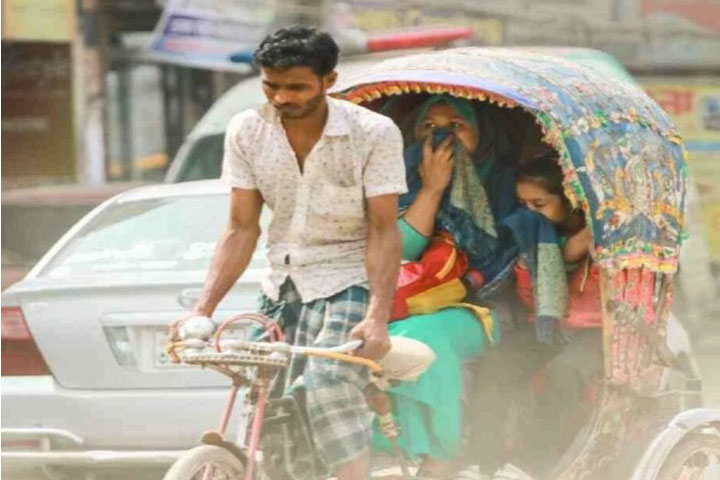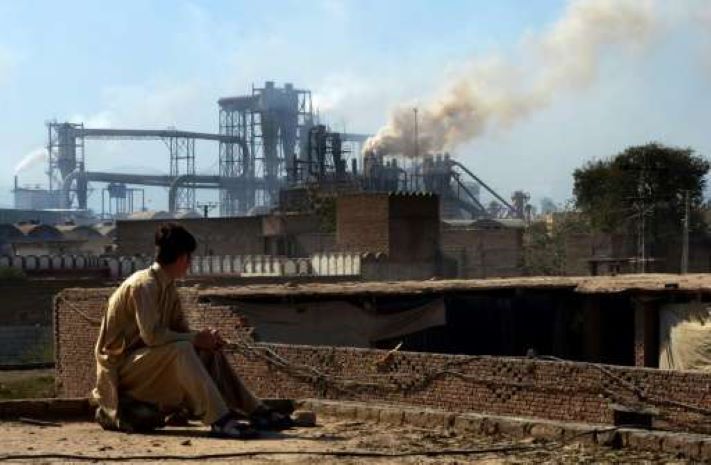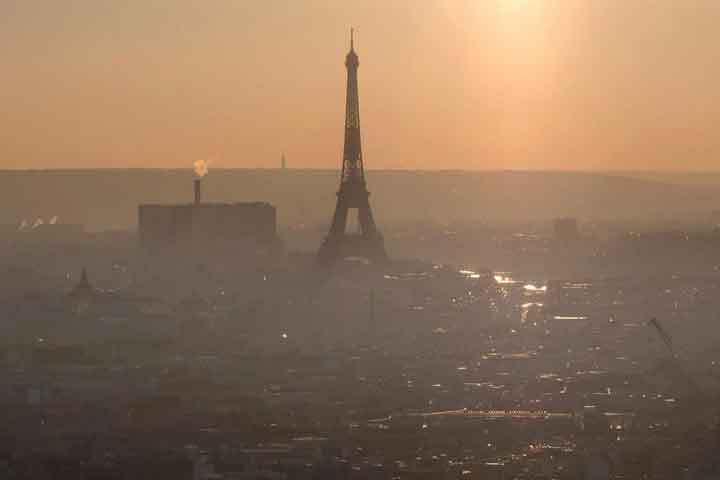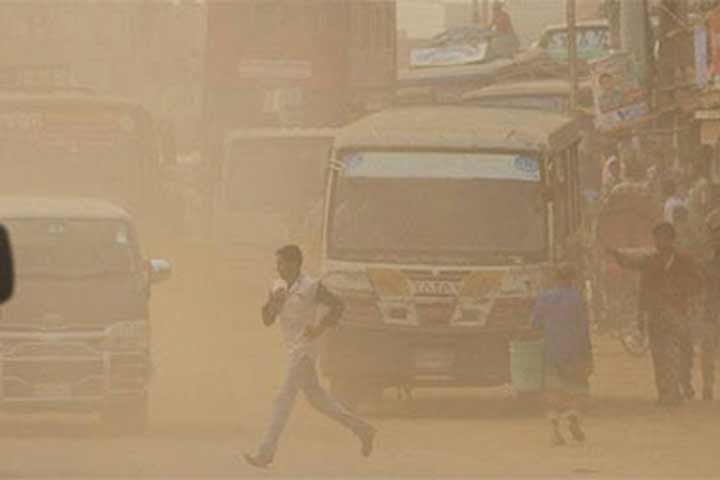Lahore Gasps For Clean Air
The city of Lahore is beautiful, residents and visitors agree. But most days, it becomes hard to find that beauty as it is blanketed under a dense haze of vehicular smoke and industrial emissions. It is no wonder that this beautiful city is now ranked among the most polluted cities in the world.
One of the major causes of this unwanted honour is the high air pollution to the point of being toxic. As I write this in mid-September, the Air Quality Index (AQI) -- an index that measures how polluted the city's air is -- is 154 (unhealthy). At this level, citizens are advised to adopt measures to keep themselves safe, including wearing a mask outdoors, running an air purifier, closing windows to avoid dirty outdoor air and avoiding all outdoor exercise – which includes something as simple as a stroll in your nearby park.
With many people unable to afford food rations amid spiralling inflation and exorbitant electricity bills, one wonders how people can afford expensive air purifiers?
Last year, an annual global survey conducted by a Swiss air purifier manufacturer found that Lahore had jumped ten places to top the list of cities with the worst air.
As winter approaches, Lahore is again expected to rise to the top of the global rankings as its residents search for face masks and air purifiers.
One of the reasons for the high air pollution in Lahore is the winter air phenomenon of smog. Smog is a combination of heavy smoke and fog, which manifests in winter due to increased brick kiln activity and crop stump burning on both sides of the Radcliff Line.
Smog leads to a rapid increase in health problems – exacerbating asthma, allergies, eye infections, respiratory tract infections and cardiac pathologies leading to premature death. Sughis et al. have reported higher blood pressure levels in school-going children of Lahore exposed to high levels of air pollution. These observations help highlight the long-term detrimental impact on public health.
Moreover, smog brings life in Lahore and surrounding areas to a virtual halt. Flights are delayed, the highways are shut, and within cities, poor visibility combined with unbreathable air makes any sort of outdoor activity impossible.
Syed Mohammad Ali, a scholar at the Middle East Institute and a teacher at Georgetown and Johns Hopkins Universities, explains that the reasons for the steady decline of air quality in Lahore are numerous.
"Vehicular emissions, industrial pollution, fossil fuel power plants, the burning of waste materials, and coal being burned by thousands of brick kilns spattered across the province are all part of the problem."
Unfortunately, the decision-makers in Lahore seem to focus only on quick fixes. On days when the AQI is extremely unhealthy, the government decides to shut down schools and offices to reduce traffic emissions and lower human exposure. Farmers who burn crop stubble are targeted, and a clampdown is launched against brick kilns.
However, if they focus on improving the efficiency of their urban management with long-term options, it would yield sustainable solutions that may lead to both, lower energy consumption and vehicular emissions.
Instead, all residents witness is a loss of green areas to make way for grey housing societies, flyovers and roads so that residents of these projects can zip across to the city centre in their expensive, gas-guzzling SUVs apart from other pollution-causing, expensive projects such as metro buses and railroads to ferry the white and blue collared workers to factories and offices.
It gives the impression that the government cares only for those citizens who own big cars and can afford air purifiers to be installed within metres of wherever they most commonly find themselves.
Urban planning in Lahore has failed to build a lane on the roads for cyclists like in The Netherlands, one of the most environmentally friendly countries in the world.
The difference between Lahore and Amsterdam could not be more stark. While the former prioritises gas-guzzling and smoke-spewing vehicles to fill its roads and its air with an AQI of over 150, Amsterdam - a city with a canal running through it - creates space for green transportation and other green practices to be rewarded with an AQI of 40 even today (The population of Lahore Division in the 2023 census is 22.77 million packed in 11,727 square kilometres while population of the entire Netherlands in 2021 was 17.53 million spread over 41,850 square kilometres).
The Global Alliance on Health and Pollution estimated in 2019 that some 128,000 Pakistanis die annually due to air pollution-related illnesses. But in true Pakistan fashion, one of the major environment-related health emergencies in Lahore, the smog, was deemed by the then-climate change minister as a conspiratorial attempt to spread misinformation.
Even today, many Pakistani officials and politicians blame stubble burning by Indian farmers across the border as the cause for Lahore's smog problem while ignoring the poor air that residents of Lahore have to breathe for the rest of the year.
They ignore how most environmental regulatory organisations lack specialised monitoring equipment, standardised protocols, trained personnel and funds.
The Punjab government needs to allocate adequate funds for monitoring and reducing harmful emissions, shifting from polluting and fossil fuels to renewable resources apart from widespread afforestation programmes.
The current situation requires a tough action plan to prevent adverse outcomes for public health whilst minimising the economic burden on Pakistan's beleaguered health sector.
The government must educate the public about the health issues of air pollution how they can protect themselves and prevent pre-existing medical conditions from worsening. Why are public service messages not flooding television, radio and the internet along with mass distribution of educational pamphlets and brochures amongst the public to ensure effective communication?
I posed questions on Lahore's environmental situation to Ahmad Rafay Alam, an environmental lawyer and activist.
Firstly, I asked him what, in his view, are the key contributors to the terrible AQI of Lahore?
Alam: "If you rely on the Food and Agriculture Department's 2018 smog report for the Punjab, it stipulates that about 45% of the year-long air pollution in Punjab comes from the transport sector, which indicates the emissions from automobiles.
It is followed by emissions from the energy sector and then the industrial sector. This has been corroborated by a report published by the Urban Unit this year, it's inventory of air pollution over the last 30 years for Lahore cites roughly the same proportions for transport, energy and industry.
A report published on the city of Lahore specifically associated 80% of air pollution with the transport sector. The transport sector gets flagged because we have some of the dirtiest fuels and petrol available in the world, so automobile emissions are a major contributor to air pollution. Then, of course, the diesel and furnace oil we burn for energy, etc."
Second, I asked how the government and civil society can help improve environmental conditions and reduce the AQI?
Alam (after an ironic chuckle): "Well, the government's job is to protect its citizens' life and property. And so, they should, both at the federal level and provincial levels, take steps to introduce cleaner fuels in Pakistan.
There are still no standards on how clean fuels will be distributed throughout the country. In any event, the provincial environmental protection agencies have legal authority to impose standards for the type of fuels used in automobiles. Yet, in none of the provinces has this power been exercised.
Then, of course, the government can focus on renewable energies and shifting and transitioning the energy sector from fossil fuel reliance to a more sustainable and renewable form of energy, specifically solar and wind. And also move towards energy efficiency, not just in buildings but also in industry. That would make a huge difference.
Also, we must find alternatives to crop burning, which happens twice a year for a few weeks. Civil society must hold the government to account and have a clear vision of a future with clear air, a vision which is stronger and longer than the five-year political election cycle of the country."
Third, I asked if the situation would worsen if the government continued to fail in long-term planning?
Alam: "Well, the situation is critical now. Air pollution in Pakistan's cities, including Lahore, is a year-long public health emergency. The Air Quality of Life Index Report by the University of Chicago indicates that life expectancy in Pakistani cities is down by about four years for every Pakistani who lives in a city, which is staggering. This will only get worse unless measures are taken to eliminate the problem where it comes from – the transport emissions, the energy emissions and the industrial emissions."
Finally, I asked him if proper planning is undertaken, how long will it take to bring AQI to normal range for the city?
Alam: "Getting air quality right is about improving the refinery capacity in Pakistan. It's about transitioning to clean energy. It's about investment in renewable energies. None of these are overnight fixes, so it will take a while. Cities that have combatted air pollution have done so over years and years, sometimes even over a decade.
Which is why, I repeat, it is imperative for civil society to have a shared vision of a clean-air future that is more durable and sustainable than the five-year political cycle that we have."
Effective cooperation between the government, civil society and individuals is needed if the environmentally hazardous weather approaching us again this year is to be tackled in a coordinated manner and if we want a clean-air future with renewable energy resources. We all want a cleaner, healthier city and healthy children – the question is, are we willing to work towards it in a planned manner?
Source:thefridaytimes.com
24 Sep 2023,14:18

















 Live Tv
Live Tv









